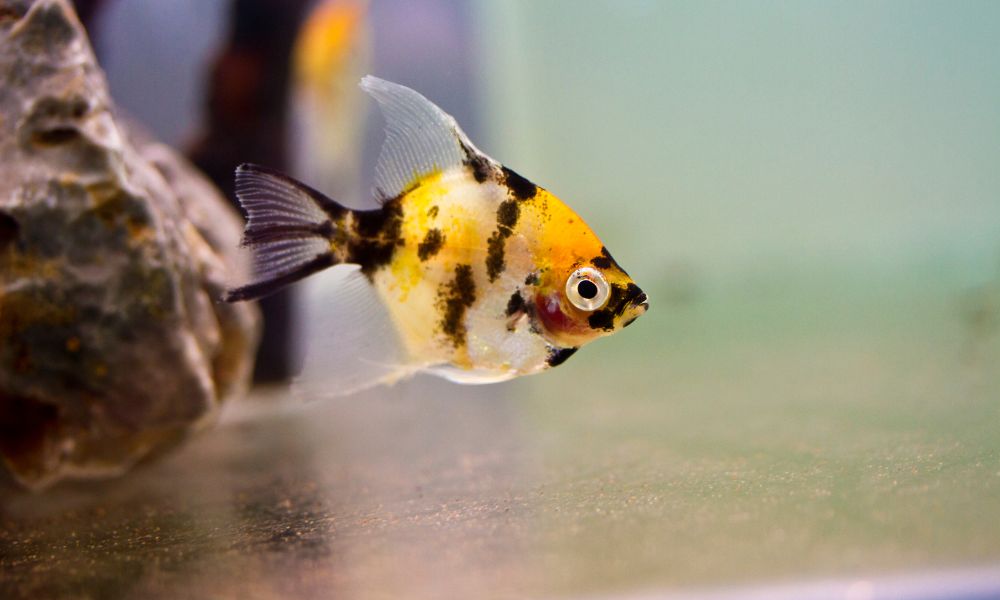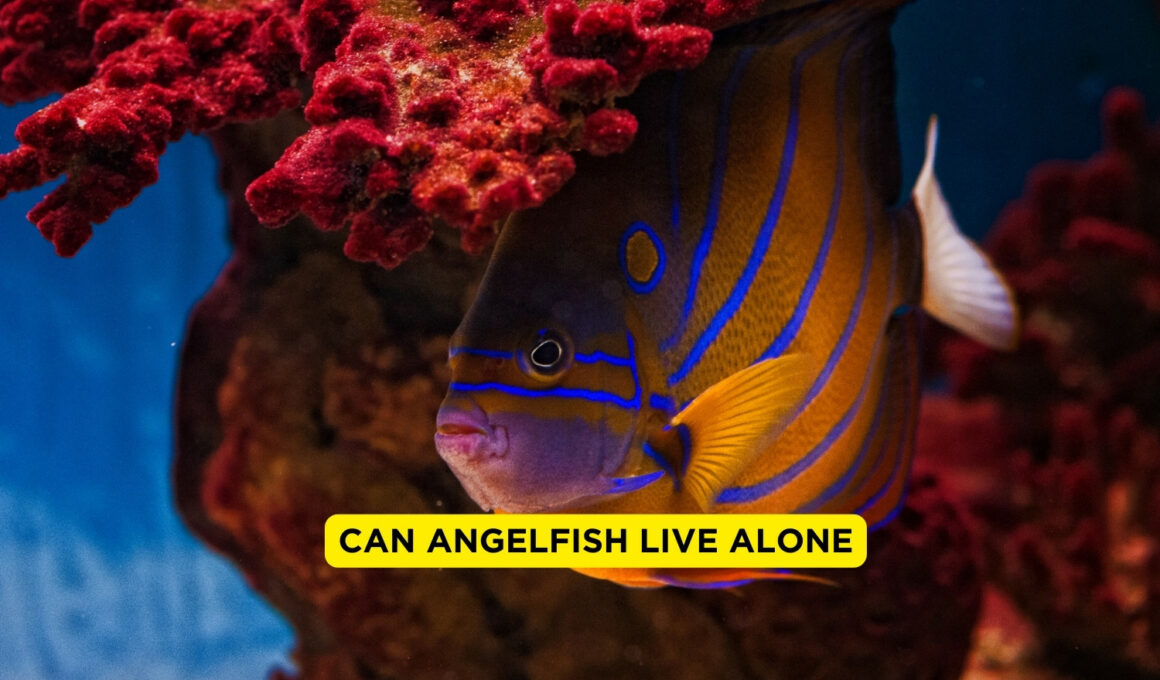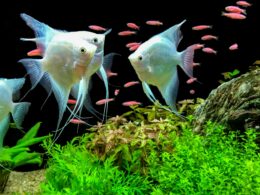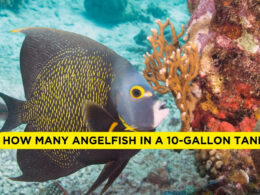In this article Show
As an experienced fishkeeper, I’ve often encountered the question: Can angelfish live alone? This is more than just a query about tank arrangements; it’s about understanding the needs and nature of these majestic creatures.
In this post, we’ll explore the essentials of angelfish care, particularly focusing on whether these fish thrive in solitude or require companionship. Our journey through this topic aims to provide clear, professional advice to help you create the best environment for your angelfish, whether they swim solo or with friends.
Can Angelfish Live Alone?
Yes, angelfish can live alone, but with precautions. While these tropical freshwater fish naturally exhibit social behaviors in groups, they can adapt to a solitary life in a well-maintained aquarium. For fishkeepers considering a single angelfish, it’s crucial to provide an optimal tank environment, including proper tank size, water conditions, and enrichment to ensure their health and happiness.
Pros And Cons of Keeping an Angelfish Alone
The following are the pros and cons of having one angelfish live in a fish tank;
Pros
- Simplified Tank Management: Caring for a single angelfish means fewer challenges in maintaining water quality and tank conditions, making it easier for beginners.
- Reduced Aggression: Angelfish can be territorial; keeping one alone eliminates the risk of aggression towards other fish.
- Focus on Individual Health: Monitoring the health and well-being of one fish is simpler, allowing for prompt responses to any health issues.
- Customized Environment: Tailoring the tank environment, diet, and care to one angelfish ensures its specific needs are met.
Cons
- Social Isolation: Angelfish are naturally social; solitary living may lead to stress or boredom.
- Behavioral Limitations: Without other fish, certain natural behaviors and interactions that contribute to an angelfish’s well-being might not manifest.
- Lack of Stimulating Environment: A single fish might miss out on the dynamic environment created by a community of fish.
- Responsibility of Fishkeeper: Ensuring the solitary fish is entertained and healthy without tank mates adds pressure on the fishkeeper to provide adequate enrichment.

Ideal Tank Conditions for a Solo Angelfish
Angelfish have an ideal tank condition and they are;
1. Tank Size
Start with a minimum of a 29-gallon tank for one angelfish. This space allows ample room for swimming and growth, as angelfish can grow quite large.
2. Water Conditions
Maintain a water temperature between 76°F to 84°F (24°C to 29°C). The pH level should be kept between 6.8 and 7.8, with a water hardness of 3 to 8 dKH. Regular water changes are essential to keep the environment clean and stable.
3. Filtration and Aeration
Use a high-quality filter to keep the water clean. Ensure gentle water movement to provide adequate oxygenation without creating strong currents that angelfish dislike.
4. Decorations and Plants
Include tall plants, either live or artificial, as angelfish enjoy vertical spaces to swim through and hide. Add decorations like rocks and driftwood to create a natural and engaging environment. Ensure all decorations have no sharp edges to prevent injury.
5. Lighting
Provide moderate lighting to mimic natural conditions and encourage plant growth if using live plants.
6. Stimulating Environment
To prevent boredom and stress, regularly rearrange the decorations and plants. This creates new areas for your angelfish to explore and keeps their environment stimulating and enriching.
Monitoring The Health and Well-being Of Solo Angelfish
Here are the various ways a fishkeeper ought to monitor the health of their solitary angelfish to avoid health problems;
1. Regular Health Checks
Observe your angelfish daily for signs of good health, such as active swimming, a hearty appetite, and vibrant colors. Check for any physical abnormalities like spots, lesions, or discoloration.
2. Balanced Diet
Feed your angelfish a varied diet that includes high-quality flakes or pellets, along with occasional treats like brine shrimp or bloodworms. Ensure the portions are appropriate to avoid overfeeding.
3. Maintain Water Quality
Regularly test the water for ammonia, nitrites, nitrates, pH, and temperature. Perform consistent water changes, usually around 25-30% per week, to keep the environment clean and stable.
4. Monitor Stress Levels
Signs of stress in an angelfish include lethargy, loss of appetite, hiding excessively, or rubbing against objects (flashing). Stress can be caused by poor water conditions, inappropriate diet, or lack of stimulation.
5. Environmental Enrichment
Change the layout of the tank occasionally to provide a new and engaging environment. This can help prevent boredom and stress in your solitary angelfish.
6. Observation of Behavior
Note any changes in behavior, as this can be an early indicator of health issues. Healthy angelfish are generally curious and active.
7. Consult a Professional
If you notice any concerning signs or behaviors, consult with a veterinarian who specializes in fish. Early intervention is crucial in addressing health issues.
By closely monitoring your angelfish and maintaining optimal tank conditions, you can ensure the health and well-being of your solitary aquatic pet. Remember, a healthy angelfish is an active and vibrant member of your home aquarium.









